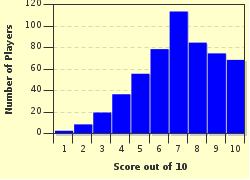Quiz Answer Key and Fun Facts
1. What tribe of native Americans lived in the immediate Chicago area?
2. Chicago is an Indian word from which the name of the city is derived. What does the word mean?
3. What is unique about the Chicago River?
4. What was the name of the fort built on the Chicago River in pioneer days?
5. Chicago has the distinction of building the first of what type of building?
6. Speaking of buildings, which skyscraper, when completed in 1973, became the tallest building in Chicago?
7. Chicago has a beautiful park of 1200 acres which stretches along Lake Michigan on the north side. What is the name of this park?
8. A section of which Chicago Street is known as "the magnificent mile?"
9. Chicago is known and has been known by many epithets including "Windy City," "City of Broad Shoulders," and "Hog Butcher of the World." Of the following choices, which one is most accurate?
10. Chicago has a world famous natural history museum. Although the museum has gone by a few names since it was founded, what is its name now?
Source: Author
medvedok
This quiz was reviewed by FunTrivia editor
minch before going online.
Any errors found in FunTrivia content are routinely corrected through our feedback system.

